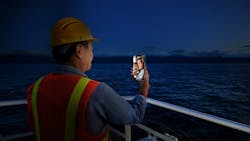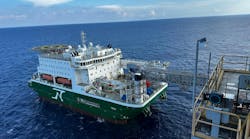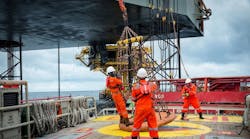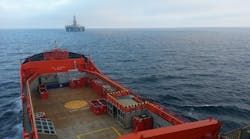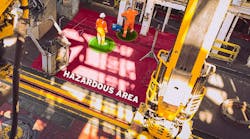Opinion: Digital connectivity quickly becoming frontline strategy to attract and retain skilled personnel
By Jimmy Grewal, Elcome International
For a long time, offshore connectivity was treated as a crew perk rather than something fundamental to how an offshore vessel or asset runs. That view is changing fast and for good reason.
Today, stable internet access offshore isn’t just about morale; it’s about safety, performance and resilience. In fact, it is becoming as important as life-saving equipment or emergency training onboard. If you can’t communicate instantly, you can’t respond quickly, and that puts people and assets at risk.
This goes beyond emails or video calls. Think weather alerts, gas leaks or critical system failures. When crews are better connected through more reliable, faster and segregated Wi-Fi, they’re alerted in real time, wherever and whenever they are on the vessel. That speed can make all the difference when the unexpected happens.
Safety also goes beyond emergencies. Daily offshore life is increasingly digital. Work permits, condition monitoring, shift schedules and HSE documentation are now accessed through cloud-based platforms. If the network is slow or unstable, that flow of information breaks down. When people don’t have the data they need, the job gets harder, mistakes are made and human error incidents increase.
Prioritizing mental health of offshore crews
Offshore crews typically rotate every few weeks, moving between high-speed internet at home and restricted, often unreliable access at sea. That shift is inconvenient, amplifies the sense of isolation and makes long stints offshore even tougher. A missed video call or delayed message might sound minor, but over time it eats away at morale and cognitive load. Then fatigues creeps in.
Some operators are already acting on this. Instead of offering limited hotspots in shared spaces, they’re rolling out full-vessel coverage. That means the crew can go online from their cabins or work areas, giving them more freedom and control over when and how they connect. That simple change reduces the feeling of confinement and helps build a healthier, safer onboard culture.
Preventing cyber issues
The shared network setup is still supporting both crew and operational internet requirements, but this is a recipe for a cyber disaster with the potential for an inadvertent crew member compromising the network, assets and company. Personal usage can also slow down critical systems, like remote diagnostics or digital permit-to-work tools.
What more forward-leaning operators are now doing is complete network separation. Crew and operations get their own secure environments, firewalled and fully compliant with company cyber policies. For example, on a vessel operating offshore West Africa by one of Elcome International's clients, more than 160 users, crew members, contractors and clients access secure internet via a single managed platform. Each user group gets appropriate access, and operational systems are never compromised.
The WELCOME Wi-Fi system, released in September 2024, allows crew members to retain their settings and login credentials as they move between rigs, vessels and platforms. That kind of continuity may seem like a detail, but it makes onboarding faster, reduces frustration and supports a more connected, confident workforce.
Key takeaway
People feel safer when they know they’ll be kept in the loop, not just during incidents but throughout the day. A connected crew is a more informed crew. In a high-risk environment, that translates directly into better decision-making, quicker responses and fewer mistakes.
The International Labour Organization already recognizes internet access as a crew welfare right. However, in offshore operations, it is clearly more than that. It’s a safety tool, a productivity driver and a key enabler of modern offshore operations.
Those still treating connectivity as an optional extra are falling behind. The leaders in the sector now see it for what it really is: essential infrastructure. The ones that act on that will build stronger crews, safer assets and more resilient operations.
Exclusive content:
About the Author

Jimmy Grewal
Jimmy Grewal is the CEO and executive director of Elcome International, a maritime systems integrator based in Dubai. With a background in economics from Duke University and early career experience at Microsoft, Grewal brings a strong technology focus to the maritime sector. Under his leadership, Elcome has expanded globally and pioneered solutions in navigation, automation and crew connectivity. He spearheaded the launch of the WELCOME Wi-Fi platform, improving digital access for thousands of seafarers. Grewal is recognized as a forward-thinking leader driving the digital transformation of shipping, with a mission to enhance safety, efficiency and welfare across the maritime industry.
